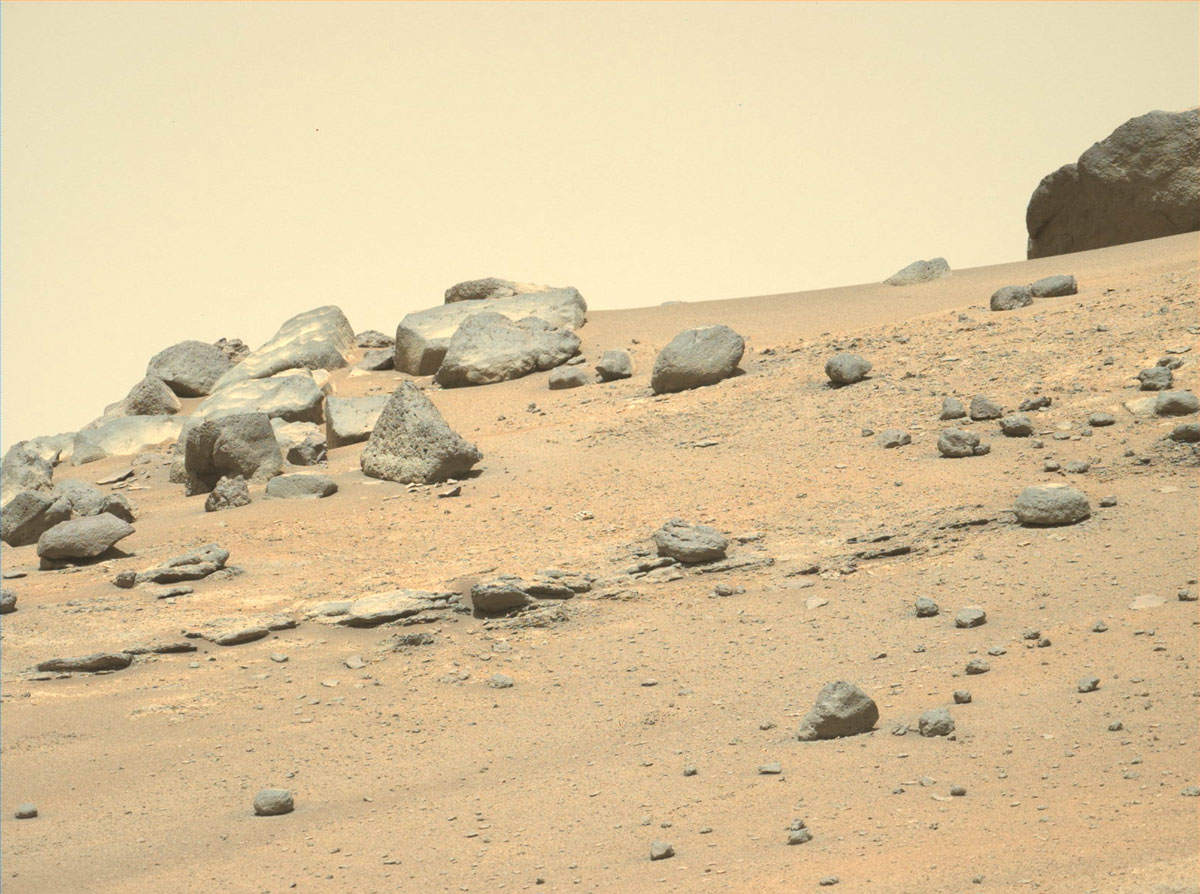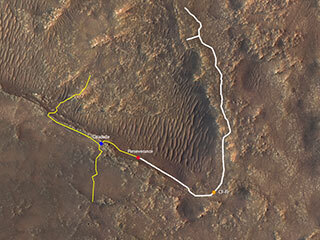4 min read

I will always remember the moments around our first sampling attempt. Longtime friend (and Sampling System Chief Engineer) Louise Jandura and I were in the operations area awaiting the next data downlink. It was “so far, so good” with our earlier morning results showing we had achieved a full-depth borehole. Other members of the team began to filter in as images of the sealed sample tube came up on the ops room monitors. We were all starting to get that feeling you can get in this business when a big milestone comes together because, at first look, it appeared to be our first cored sample. But within minutes, the team noted that the volume probe indicated no sample was in the tube, and we quickly switched to problem-solving mode – once again trying to solve another problem tossed our way from the surface of Mars.
Our team has been working hard over the last 12 days to both ensure we have adequately assessed the data from the first coring attempt and also developed a solid plan forward. After further review of the engineering and imaging data, our final conclusion is the same as our initial assessment: The rock simply wasn’t our kind of rock.
The Sampling and Caching System aboard the rover performed as expected – quite well, as a matter of fact. However, the rock we chose for this first effort did not. The act of coring into it resulted in the rock breaking apart into powder and small fragments of material, which were not retained in the tube due to their size. Although we had successfully acquired over 100 cores in a range of different test rocks on Earth, we had not encountered a rock in our test suite that behaved in quite this manner.
We are currently focusing on the appropriate next steps to achieve a cored sample as soon as is prudent while managing the risk of how we do this. Our first step is somewhat obvious – find a more resistant rock that is less likely to crumble for coring. Fortunately, there is extensive outcropping of this kind of rock all along our planned traverse path towards South Seítah. This type of rock outcrop was previously identified as a high science-value target for sampling (more about this in a future blog post from Project Scientist Ken Farley later this week).

The plan is to select a suitable rock near the region named Citadelle in the associated image. We will first abrade the selected rock and use the science instruments to confirm (to the best of our ability) that the new target is likely to result in a core after the sampling process.
If we choose to sample the rock, Perseverance will perform a set of activities very close to what was done on the prior coring target. The main difference will be, after coring, we’ve added a “ground in the loop” session to review the images of the tube in the bit and confirm a sample was collected. Then, the tube will be transferred into the rover for processing.
If post-coring imagery shows no sample in the tube, we may elect to try again, using an alternate geometry (e.g. more horizontal) for the coring activity. Another option, if the targeted rock doesn’t allow for a change in geometry, is to look for a different rock in this region that is more easily cored horizontally.
The team is excited and optimistic about the likely outcome of this next sampling attempt. But, if we are not able to achieve collection of a rock core this time, we have additional knobs that we can turn with respect to our coring activities.
We expect to have settled on a target rock early next week as we drive along the area of interest. After that, we will begin our coring attempt. We will let you know more timeline details of the next sample attempt once the target rock is selected.
Written by Jennifer Trosper, Project Manager at NASA's Jet Propulsion Laboratory







